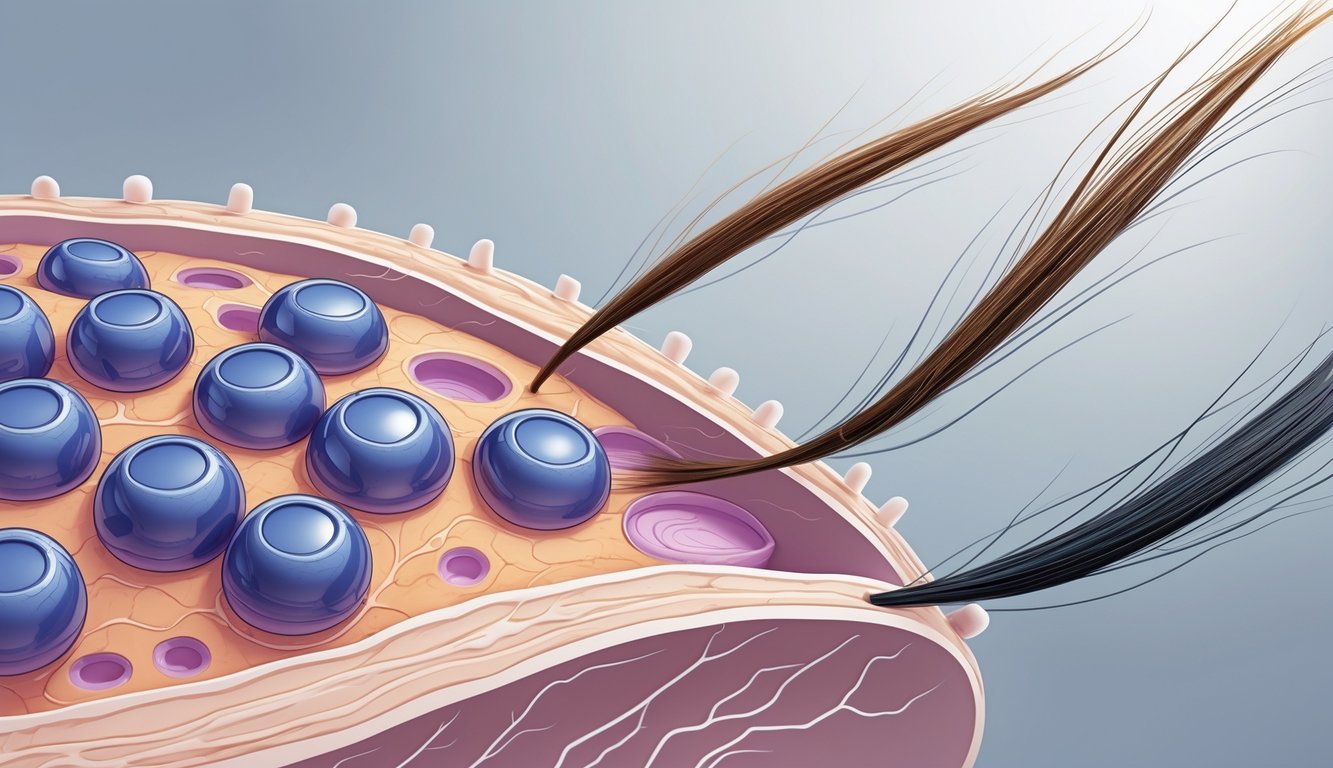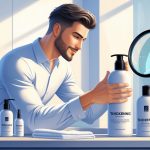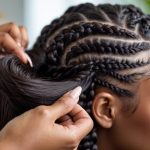
Breakage and Structural Weakness After Dye Use
I did not expect my hair to just snap off at my collarbone. But after using that “moisture lock” permanent dye, brittle ends showed up in, like, two days. It’s impossible to ignore how fragile your hair gets when you’re chasing “shine.” Stylists keep telling me it’s not just about color fade—damage goes way deeper, and sometimes you don’t even see it until weeks later.
Signs and Symptoms of Hair Breakage
My brush? Full of snapped strands. Ponytail’s got weird, lumpy spots. Split ends everywhere. Sunlight makes it look like a horror show—shafts splaying open, dull and sad. Dr. Lin (she writes for the American Academy of Dermatology) says, “Breakage rarely stops at the ends; you can get splits and holes in the cuticle after just one round with ammonia-based color.” I believe her. My scalp gets flakier every time I dye, and it’s not just “mild discomfort”—it’s a warning sign. My roots always survive better than the middle bits, though, which makes zero sense. Permanent dyes like PPD? You get long-lasting color, but you lose elasticity and moisture instantly. There’s even a PubMed study showing hair fiber changes after one session: weaker, rougher, more likely to snap.
Factors That Exacerbate Breakage
What drives me nuts? Using hot tools the same day as a color appointment. Who has the patience to wait? My cousin’s all about “cold water only,” but then she forgets and nukes her hair with a blow dryer. Instant frizz. Nobody blames winter radiators enough—dry air just makes everything worse after peroxide.
Mixing chemical straighteners with dyed hair? That’s just asking for breakage. Silicone serums? They only hide the mess, don’t fix it. Dermatologists say it straight: “Permanent hair dyes inherently weaken the hair because they cause internal changes to the protein structure.” Stack dye jobs, and the cortex crumbles.
Weird thing: Sometimes deep conditioners with protein make my hair stiffer, not stronger. Why does my left temple always break more? Maybe I sleep weird. That’s not in any FAQ, but it’s real. Ammonia and peroxide? They shred the inner structure, and it only takes one coloring to see the fallout. No exaggeration.
Role of Hair Follicles in Maintaining Vibrant Strands

I keep staring at my roots during Zoom calls, half-expecting someone to comment. If your follicles are stressed, your hair’s just going to look worse—dull, faded, slow to bounce back. Nobody talks about this, but follicle health is the real driver behind color, shine, and recovery. Ingredient labels never mention it.
Healthy Follicle Function
Nobody reads the fine print on dye boxes, but every stylist I’ve met says the secret’s under the surface. Even the science-y articles admit: if the follicle can’t handle nutrition and sebum, forget about vibrant hair. Melanocytes (those pigment cells) just give up if your follicles are inflamed, so your color fades weird and never looks shiny, no matter what the box promises.
I’ve watched people blow money on serums instead of dealing with their scalp. Dr. Kaur from Harvard literally said, “Inflammatory stress at the follicle directly predicts strand dullness.” Obvious, but you don’t see it until it’s too late. Skip scalp detox or massage? You’re just gambling with shine and structure way before you notice your highlights fading.
Protection and Repair Strategies
People think “sulfate-free” means their follicles are safe. Nope. Too much chemical anything—dye, heat, rough towels—wrecks the barrier around each follicle. That means microtears, slow growth, and, yeah, more dullness. Ask a colorist; they’ll tell you: “If you don’t nourish the follicle, forget about shine.”
In college, I was obsessed with rosemary oil scalp tonics. Turns out, protein-bonding masks work for the root too, especially with ingredients like niacinamide (apparently, clinical trials say it boosts follicle density by 16% in eight weeks, but who’s counting). Basically, if you skip targeted protection—like scalp exfoliation, UV sprays, and smart conditioning—your follicles become chaos, dragging your hair down with them. And, seriously, why does nobody talk about water filters? Heavy metals in tap water wreck follicles and ruin dye jobs, but everyone ignores it.
Dry Hair: Causes and Care Post-Dye
Permanent hair dye? Still manages to dry out my hair no matter how careful I am. The struggle: weird dryness, stubborn dullness, and hair that refuses to cooperate, no matter what I do.
Why Dye Leads to Dryness
It’s like opening a bag of chips and wondering why they’re all stale—my post-dye hair just frizzes out and feels dead. Chemical dyes smash into the hair, pry apart the cuticle, strip out natural oils, and leave everything brittle. I’ve read way too many studies (here’s a good one) showing peroxide opens the cuticle, dissolves pigment, and lets moisture run for the hills. Even ammonia-free dye dries you out, since pH changes alone mess with the hair’s barrier. One stylist showed me microscope pics—actual scales lifting off the shaft. Permanent dye lifts those layers, and then you’re just stuck with dry hair for months.
Hair doesn’t “heal” after structural damage, no matter what the bottle says. You can fake shine, but dryness sticks around. I finally caved and bought bond repair stuff like Olaplex and K18—way better than just slathering on heavy conditioners. Worst advice I ever got? “Don’t wash your hair for a week.” I nearly scratched my scalp raw.



